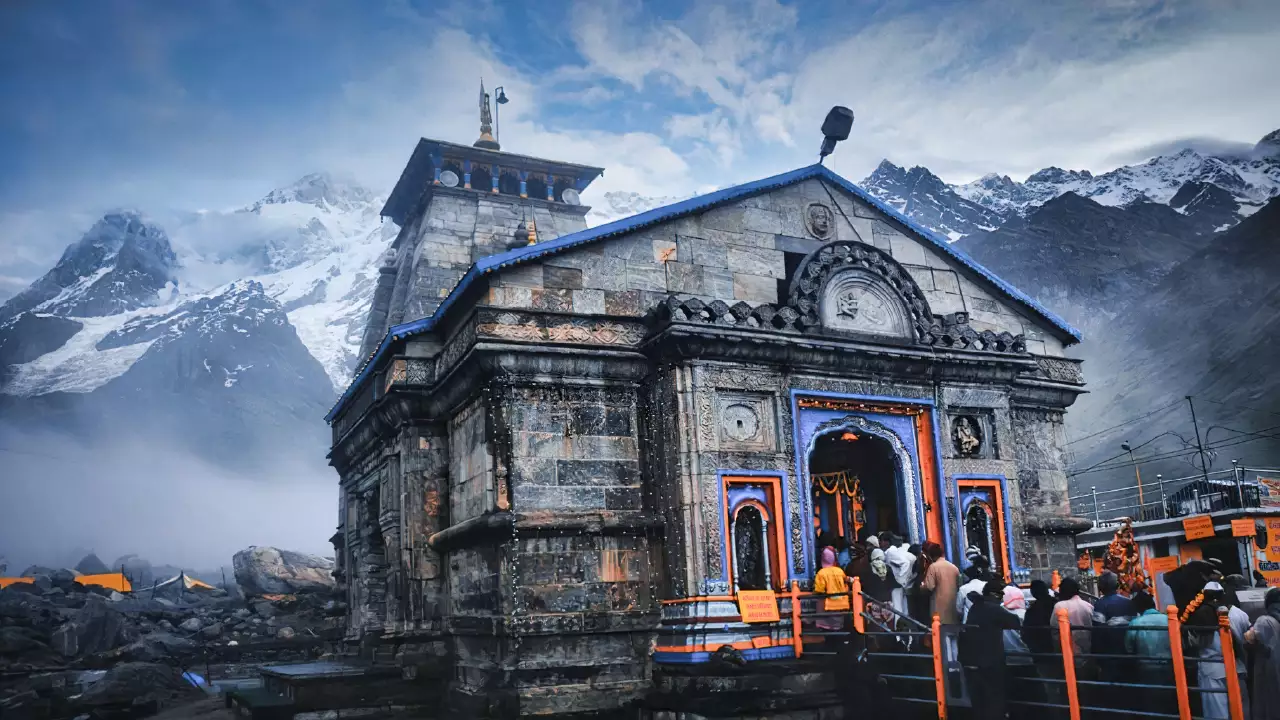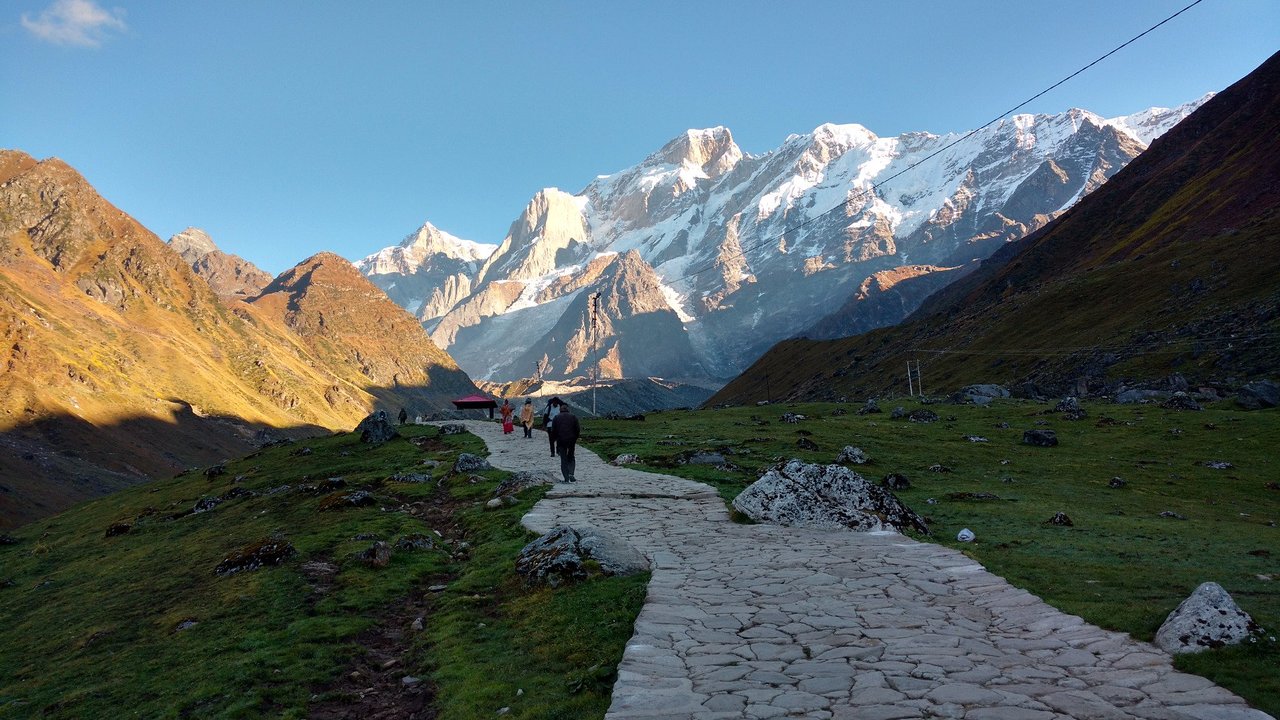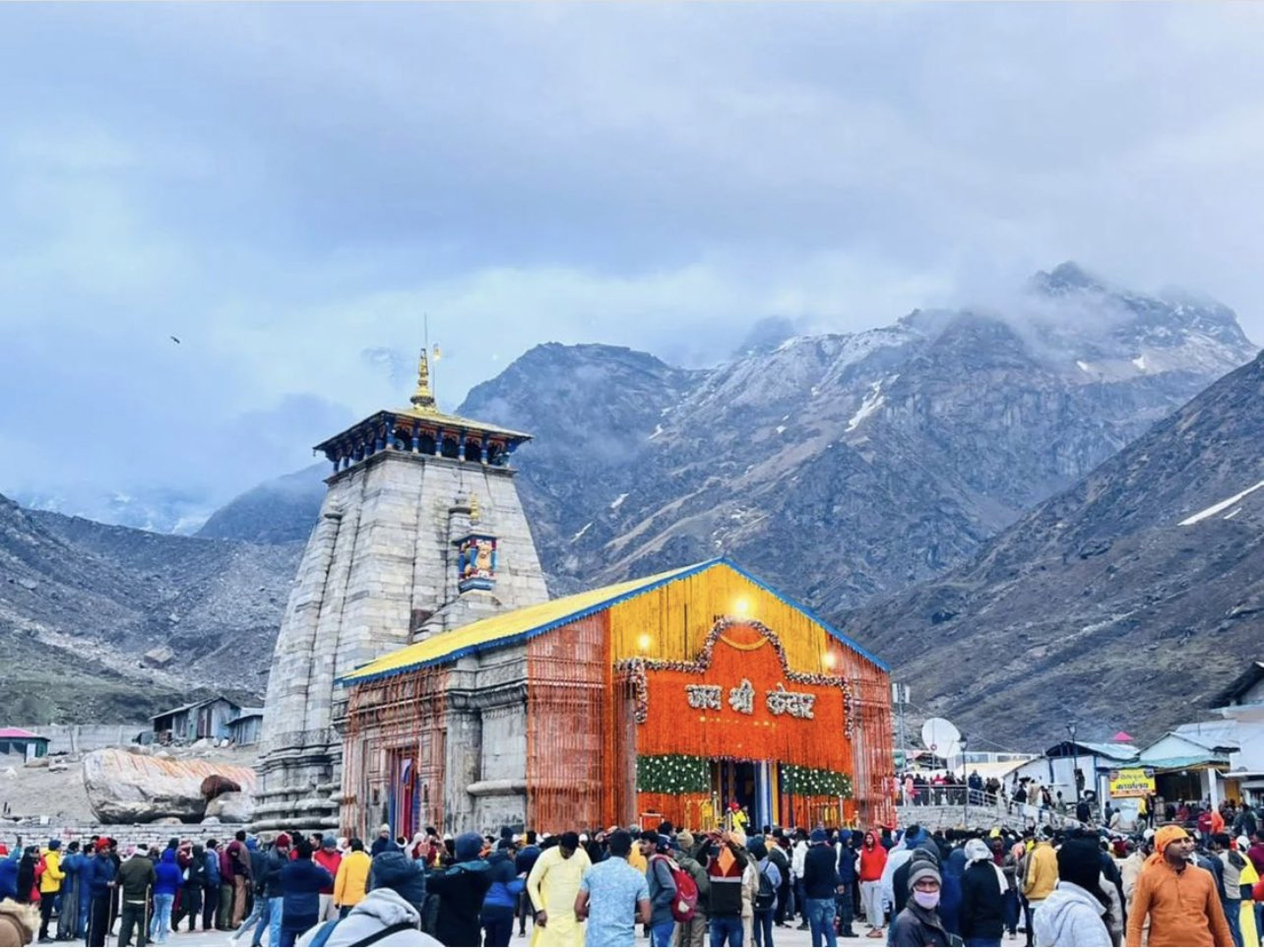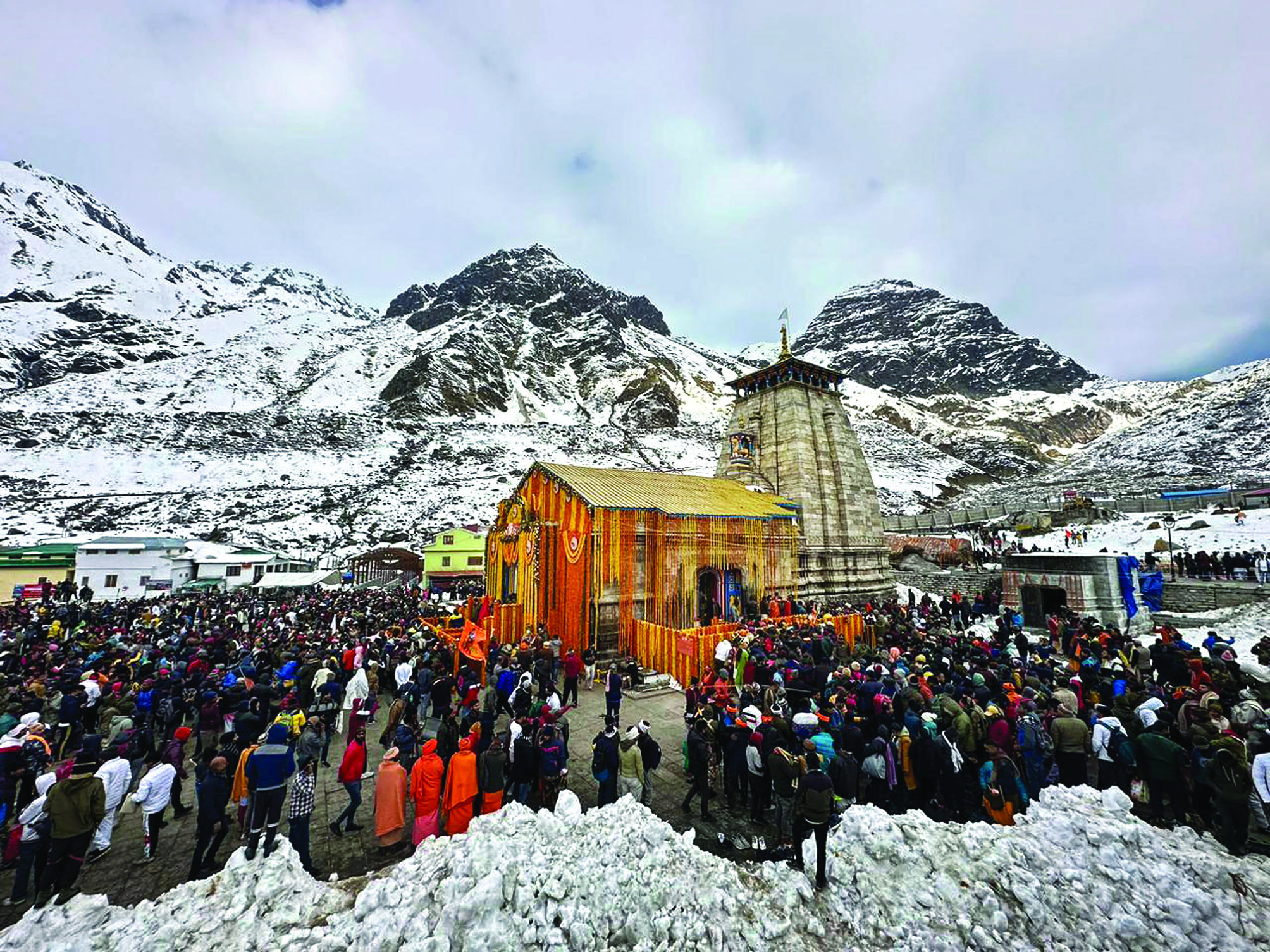Kedarnath Tour Package: A Divine Journey to the Sacred Himalayan Shrine
Published on February 12, 2025
Introduction to Kedarnath: A Spiritual and Historical Marvel
Nestled in the heart of the majestic Himalayas, Kedarnath stands as a beacon of spiritual significance and historical grandeur. This sacred town, located in the Rudraprayag district of Uttarakhand, is renowned for the ancient Kedarnath Temple, one of the twelve Jyotirlingas dedicated to Lord Shiva. Established in the 8th century by the revered Hindu sage Adi Shankaracharya, the temple holds immense religious importance and attracts devotees from across the globe.
For those seeking a seamless and enriching pilgrimage, opting for a Kedarnath tour package from Delhi ensures a well-organized journey to this revered shrine. The geographical setting of Kedarnath is nothing short of spectacular—surrounded by snow-capped peaks, verdant valleys, and pristine rivers, the town offers a breathtaking panorama that captivates every traveler. Situated at an altitude of approximately 3,583 meters, the journey to Kedarnath is both challenging and rewarding, enhancing the mystical aura of this sacred destination.
Beyond its religious essence, Kedarnath is deeply rooted in Indian culture and mythology. It is believed that the Pandavas sought Lord Shiva's blessings here to atone for their sins after the Kurukshetra war, adding a legendary dimension to its spiritual significance. Every year, thousands of pilgrims embark on this divine expedition, often trekking through rugged terrains or opting for ponies and helicopter services to reach the temple. Choosing a Kedarnath tour package from Delhi simplifies travel logistics, offering a hassle-free experience for devotees and adventure seekers alike.
More than just a pilgrimage, Kedarnath is an experience that blends spirituality, history, and nature. Its serene environment makes it an ideal place for meditation and introspection, providing solace to those who seek divine grace. With well-planned tour packages from Delhi, travelers can immerse themselves in the spiritual and natural wonders of Kedarnath, making their journey truly memorable.

Architectural Grandeur and Cultural Significance of Kedarnath Temple
The Kedarnath Temple, a masterpiece of ancient architecture, stands as a testament to the ingenuity and craftsmanship of early artisans. Constructed primarily from massive stone slabs, the temple exhibits a robust structural integrity that has withstood the test of time and the harsh climatic conditions of the Himalayas. The architectural style of the temple is predominantly North Indian, characterized by its towering spire and intricate carvings that depict scenes from Hindu mythology. These carvings not only enhance the aesthetic appeal of the temple but also serve as a visual narrative of the cultural and religious stories cherished by generations.
The temple complex is strategically aligned along a north-south axis, which is believed to channel cosmic energies, enhancing the spiritual ambiance of the site. Inside, the sanctum sanctorum houses the main deity, a conical rock formation known as the Jyotirlinga, symbolizing the presence of Lord Shiva. This unique representation of Shiva as a lingam is central to the worship practices observed at Kedarnath and underscores the temple's role as a focal point for Shaivite traditions.
Culturally, the Kedarnath Temple plays a pivotal role in the lives of millions of Hindus worldwide. It is one of the Char Dham pilgrimage sites, which are considered essential visits for spiritual liberation according to Hindu beliefs. The annual pilgrimage to Kedarnath attracts devotees from diverse backgrounds, each seeking blessings and a closer connection to the divine. This influx of pilgrims not only highlights the temple's religious importance but also fosters a vibrant cultural exchange, enriching the communal tapestry of the region.
Moreover, the rituals and ceremonies conducted at the temple are steeped in tradition and symbolism. Daily pujas, special offerings, and seasonal festivals like Maha Shivaratri draw large congregations, creating an atmosphere charged with devotion and reverence. These events are not merely religious observances but are integral to the cultural life of the community, reinforcing social bonds and shared values among participants.
The impact of the Kedarnath Temple on local culture is profound. It serves as a custodian of traditional arts, music, and crafts, which are showcased during religious festivities. Artisans and performers find a platform to display their skills, ensuring that these cultural expressions are preserved and passed down through generations. Additionally, the temple's presence has spurred the development of ancillary services such as lodging, food, and transportation, contributing significantly to the local economy.
In essence, the Kedarnath Temple is much more than an architectural marvel; it is a living embodiment of cultural and spiritual heritage. Its enduring legacy is woven into the very fabric of Hindu tradition, influencing religious practices, cultural norms, and economic activities in the region. As visitors traverse the sacred corridors of this historic site, they partake in a continuum of faith and culture that transcends mere physical boundaries, connecting them to a timeless spiritual lineage.

Mythological Legends and Religious Practices Surrounding Kedarnath
The mythological legends associated with Kedarnath are deeply intertwined with the broader tapestry of Hindu epics, most notably the Mahabharata. According to ancient lore, the Pandavas, after the cataclysmic battle of Kurukshetra, sought redemption for the sin of fratricide. Guided by Lord Krishna, they embarked on a quest to seek blessings from Lord Shiva. However, Shiva, unwilling to absolve them easily, assumed the form of a bull and concealed himself amidst the herds grazing near Guptakashi. Recognizing him, Bhima, the strongest of the Pandava brothers, attempted to seize the bull by its tail and hind legs. In response, Shiva submerged himself into the ground, leaving behind his hump on the surface. This hump is worshipped today as the Jyotirlinga in the Kedarnath Temple, symbolizing Shiva's benevolent yet elusive nature.
This legend not only underscores the deep-rooted connection between Kedarnath and the Mahabharata but also highlights the theme of penance and redemption, central to many Hindu narratives. The story of the Pandavas' relentless pursuit of Shiva and their eventual attainment of salvation through sincere devotion resonates profoundly with pilgrims who visit Kedarnath seeking spiritual cleansing and divine grace.
Religious practices at Kedarnath are as varied as they are profound, reflecting the rich tapestry of Hindu rituals and ceremonies. One of the most significant rituals is the daily 'Aarti,' a ceremonial worship involving fire, incense, and chanting of Vedic hymns. Conducted twice a day, the Aarti fills the temple with a reverberating aura of sanctity and devotion. Pilgrims participate actively, holding lamps and offering prayers, thus becoming an integral part of this spiritual symphony.
Another important ritual is the 'Abhishek,' the ceremonial bathing of the Jyotirlinga with sacred substances like milk, honey, and ghee. This ritual, performed by priests, is believed to purify the soul and bestow blessings upon the devotees. During major Hindu festivals like Maha Shivaratri, the temple witnesses an intensified version of these rituals, attracting thousands of devotees who wish to immerse themselves in the divine energy of the occasion.
Seasonal festivals play a crucial role in the religious calendar of Kedarnath. The Chaturmas period, spanning four months of monsoon, sees the temple closed to the public as the idol of Lord Shiva is carried to Ukhimath, another temple lower in the valley, where continuous worship is maintained. This practice, steeped in practicality and tradition, ensures the safety of both the deity and the pilgrims during the harsh winter months. The reopening of the temple post-Chaturmas is celebrated with great fervor, marked by elaborate rituals and the participation of local communities.
These practices and legends not only reinforce the spiritual significance of Kedarnath but also weave a complex web of cultural and religious interactions. They offer insights into the ways in which mythology shapes religious observance and how these observances, in turn, influence the cultural landscape of the region. For the devout, each ritual performed and each legend recounted at Kedarnath is a step closer to understanding the divine mysteries and achieving spiritual enlightenment.

Natural Beauty and Environmental Challenges of Kedarnath
Kedarnath, cradled within the mighty Himalayas, is a spectacle of natural splendor that leaves an indelible mark on every visitor. The town is enveloped by towering peaks draped in perpetual snow, creating a picturesque backdrop that seems almost otherworldly. Among these, the Kedarnath Mountain itself stands out, its rugged contours and snow-capped summit serving as a silent sentinel over the sacred temple below. The Mandakini River, originating from the Chorabari Glacier, meanders through the valley, its crystal-clear waters reflecting the azure skies and verdant landscapes, adding a serene touch to the otherwise rugged terrain.
The biodiversity of the region further enhances its allure. Dense forests of deodar and rhododendron cloak the lower slopes, providing habitat to a myriad of wildlife species. Rare flora and fauna, some endemic to this high-altitude ecosystem, thrive in this pristine environment, making Kedarnath not just a spiritual haven but also a biodiversity hotspot. The sight of colorful birds flitting through the trees or the occasional glimpse of a musk deer adds an element of surprise and wonder to the trekking routes leading to the temple.
However, this breathtaking natural beauty is juxtaposed against significant environmental challenges. Climate change poses a formidable threat to the delicate ecological balance of Kedarnath. Rising temperatures have accelerated the melting of glaciers, including the Chorabari, which feeds the Mandakini River. This glacial retreat not only alters the river's flow but also increases the risk of flash floods—a peril vividly remembered from the catastrophic floods of 2013 that devastated the region. These floods were a stark reminder of nature's power and the vulnerability of human settlements in such precarious locations.
Deforestation, driven by the needs of the burgeoning tourist and pilgrim populations, further exacerbates the environmental issues. The cutting down of trees for construction and fuel leads to soil erosion and loss of habitat, threatening the survival of local wildlife and plant species. Moreover, the increasing footfall of tourists and pilgrims brings with it waste management challenges, with litter and non-biodegradable waste accumulating along the trails and in the town, marring the pristine environment.
Efforts are underway to mitigate these environmental impacts. Initiatives such as eco-friendly trekking practices, waste segregation and recycling programs, and afforestation drives aim to preserve the natural beauty of Kedarnath while accommodating the spiritual aspirations of its visitors. Yet, the balance between development and conservation remains delicate, requiring sustained commitment and innovative solutions to ensure that Kedarnath continues to enchant future generations without compromising its ecological integrity.
In essence, the natural beauty of Kedarnath is a double-edged sword. While it draws countless admirers and devotees, eager to bask in its glory and seek spiritual solace, it also demands a conscientious approach to safeguard its fragile ecosystems. The challenge lies in harmonizing human activity with nature's rhythms, ensuring that the majesty of Kedarnath is preserved for posterity.

Socio-Economic Impact and Infrastructure Development in Kedarnath
The socio-economic landscape of Kedarnath is intricately linked to its status as a major pilgrimage site. The influx of thousands of pilgrims annually injects substantial economic vitality into the region, fostering growth in various sectors such as hospitality, retail, and transportation. Local businesses, ranging from small tea stalls to larger lodges and shops selling religious paraphernalia, thrive on the steady stream of visitors. This economic activity not only sustains the livelihoods of the residents but also attracts entrepreneurs and workers from neighboring areas, thereby expanding the local workforce and enhancing economic diversity.
Infrastructure development in Kedarnath has been both a response to and a driver of its growing popularity. To accommodate the increasing number of pilgrims, there have been significant improvements in the town's infrastructure. Enhanced road networks, better connectivity via helicopter services, and improved accommodation facilities have made the journey to Kedarnath more accessible and comfortable. These developments are crucial, especially considering the challenging terrain and weather conditions typical of the region.
However, the rapid infrastructural expansion brings its own set of challenges. The environmental impact of constructing new facilities and expanding existing ones poses a threat to the delicate Himalayan ecosystem. Efforts are being made to implement sustainable building practices that minimize ecological disruption. For instance, the use of eco-friendly materials and technologies that blend with the natural surroundings is encouraged. Additionally, waste management systems have been upgraded to handle the increased volume of refuse generated by tourists and pilgrims, aiming to maintain the sanctity and cleanliness of the area.
Community involvement is pivotal in managing the socio-economic dynamics of Kedarnath. Local governance bodies work closely with community leaders to ensure that development projects benefit the residents while preserving the cultural and spiritual essence of the town. Training programs and workshops are organized to equip locals with skills needed in the tourism sector, thereby empowering them economically and socially. Moreover, initiatives to promote local handicrafts and products not only boost the economy but also help preserve the cultural heritage of the region.
In summary, while the socio-economic benefits brought by pilgrimages and tourism are undeniable, balancing these with sustainable development and environmental preservation remains a critical challenge. The ongoing efforts to enhance infrastructure while respecting the ecological and cultural integrity of Kedarnath underscore the complex interplay between development and conservation in this revered locale. As Kedarnath continues to evolve, the focus remains on creating a harmonious environment where economic prosperity and environmental stewardship go hand in hand, ensuring the town's resilience and sustainability for future generations.

Reflections on Kedarnath: A Confluence of Spirituality, Heritage, and Nature
Kedarnath, nestled in the lap of the Himalayas, is more than just a geographical location or a pilgrimage site. It is a living testament to the confluence of spirituality, heritage, and nature, where the divine meets the earthly, and history intertwines with the eternal rhythms of the natural world. This sacred town, perched at an altitude of 3,583 meters above sea level, offers a profound experience that transcends the boundaries of time and space. It invites pilgrims, travelers, and seekers alike to immerse themselves in its spiritual aura, marvel at its historical significance, and revel in its breathtaking natural beauty. As we reflect on Kedarnath, it becomes evident that its essence lies in the seamless integration of these three dimensions—spirituality, heritage, and nature—each enriching the other to create a destination of unparalleled depth and meaning.
The Spiritual Essence of Kedarnath
At the heart of Kedarnath lies its spiritual essence, which has drawn millions of devotees over centuries. The Kedarnath Temple, one of the twelve Jyotirlingas dedicated to Lord Shiva, stands as a beacon of faith and devotion. For Hindus, it is not merely a temple but a sacred portal to connect with the divine. The very name "Kedarnath" translates to "Lord of the Field," symbolizing Shiva's role as the protector and nurturer of creation. Pilgrims who undertake the arduous journey to this remote shrine do so with the belief that their sins will be absolved and their souls purified.
The spiritual allure of Kedarnath is deeply rooted in Hindu mythology. According to legend, the Pandavas, after the Kurukshetra war, sought Lord Shiva's blessings to atone for the sin of fratricide. Shiva, initially reluctant to grant them audience, took refuge in the form of a bull and submerged himself into the earth, leaving behind his hump, which is worshipped as the Jyotirlinga in the temple. This mythological narrative underscores themes of redemption, perseverance, and divine grace, resonating profoundly with pilgrims who come seeking spiritual liberation.
The rituals and ceremonies performed at Kedarnath further amplify its spiritual magnetism. Daily pujas, the rhythmic chanting of Vedic hymns, and the ceremonial bathing of the Jyotirlinga create an atmosphere charged with devotion and reverence. During festivals like Maha Shivaratri, the temple transforms into a vibrant hub of spiritual energy, drawing thousands of devotees who wish to partake in the divine blessings. These practices are not mere religious observances; they are acts of surrender, humility, and connection with the cosmos, offering pilgrims a glimpse of the infinite.
For many, the journey to Kedarnath itself is a spiritual exercise. The trek through rugged terrains, steep ascents, and pristine landscapes serves as a metaphorical path to self-discovery and enlightenment. Each step taken amidst the towering peaks and flowing rivers becomes a meditation, a moment of introspection, and a reminder of the transient nature of human existence. In this way, Kedarnath transcends its physical identity and becomes a sacred journey—a pilgrimage not just to a place, but to the depths of one’s own soul.

A Living Legacy ofe Heritag
Beyond its spiritual significance, Kedarnath is a treasure trove of cultural and historical heritage. The Kedarnath Temple, believed to have been established by Adi Shankaracharya in the 8th century, is a masterpiece of ancient Indian architecture. Its robust stone structure, intricate carvings, and alignment along a north-south axis reflect the ingenuity and craftsmanship of its creators. The temple's design is not only functional but also symbolic, channeling cosmic energies and creating a sacred space that fosters spiritual awakening.
The historical importance of Kedarnath extends beyond its architectural grandeur. It is deeply embedded in the cultural fabric of India, serving as a custodian of traditions, myths, and legends. The temple's association with the Mahabharata elevates its status from a religious site to a historical landmark. The story of the Pandavas' quest for Shiva's blessings adds a layer of mythological depth, making Kedarnath a repository of India's rich literary and cultural heritage.
Moreover, Kedarnath plays a pivotal role in preserving traditional arts, music, and crafts. During religious festivals, local artisans and performers showcase their skills, ensuring that these cultural expressions are passed down through generations. The temple also fosters a sense of community and shared identity among its visitors. Pilgrims from diverse backgrounds converge here, united by their faith and devotion, creating a vibrant tapestry of cultural exchange and mutual respect.
The preservation of Kedarnath's heritage is not without challenges. Natural calamities, such as the devastating floods of 2013, have posed significant threats to its structural integrity and cultural legacy. However, efforts to restore and protect the temple underscore the resilience and determination of those committed to safeguarding this invaluable heritage. The reconstruction and conservation initiatives serve as a reminder of the enduring bond between humanity and its past, urging us to honor and preserve the legacies that define our collective identity.

The Majesty of Nature: A Divine Backdrop
Kedarnath's spiritual and historical dimensions are beautifully complemented by its awe-inspiring natural surroundings. The town is cradled within the majestic Himalayas, surrounded by towering snow-clad peaks, lush green valleys, and glistening rivers. The Kedarnath Mountain, standing sentinel over the temple, and the Mandakini River, originating from the Chorabari Glacier, create a surreal landscape that seems almost otherworldly. This natural splendor not only enhances the spiritual ambiance of the region but also reinforces the interconnectedness of all life forms.
The biodiversity of Kedarnath further enriches its natural allure. Dense forests of deodar and rhododendron cloak the lower slopes, providing habitat to a myriad of wildlife species. Rare flora and fauna, some endemic to this high-altitude ecosystem, thrive in this pristine environment, making Kedarnath a biodiversity hotspot. The sight of colorful birds flitting through the trees or the occasional glimpse of a musk deer adds an element of surprise and wonder to the trekking routes leading to the temple. For nature enthusiasts, Kedarnath is a paradise waiting to be explored.
However, the natural beauty of Kedarnath is juxtaposed against significant environmental challenges. Climate change poses a formidable threat to the delicate ecological balance of the region. Rising temperatures have accelerated the melting of glaciers, including the Chorabari, which feeds the Mandakini River. This glacial retreat not only alters the river's flow but also increases the risk of flash floods—a peril vividly remembered from the catastrophic floods of 2013 that devastated the region. These floods were a stark reminder of nature's power and the vulnerability of human settlements in such precarious locations.
Deforestation, driven by the needs of the burgeoning tourist and pilgrim populations, further exacerbates the environmental issues. The cutting down of trees for construction and fuel leads to soil erosion and loss of habitat, threatening the survival of local wildlife and plant species. Moreover, the increasing footfall of tourists and pilgrims brings with it waste management challenges, with litter and non-biodegradable waste accumulating along the trails and in the town, marring the pristine environment.
Efforts are underway to mitigate these environmental impacts. Initiatives such as eco-friendly trekking practices, waste segregation and recycling programs, and afforestation drives aim to preserve the natural beauty of Kedarnath while accommodating the spiritual aspirations of its visitors. Yet, the balance between development and conservation remains delicate, requiring sustained commitment and innovative solutions to ensure that Kedarnath continues to enchant future generations without compromising its ecological integrity.

A Call for Sustainable Harmony
As we reflect on Kedarnath, it becomes clear that its true essence lies in the harmonious coexistence of spirituality, heritage, and nature. Each dimension enriches the others, creating a destination that is not only sacred but also culturally and ecologically significant. However, the challenges posed by climate change, environmental degradation, and unsustainable tourism practices demand urgent attention and action.
Sustainable development must be at the forefront of efforts to preserve Kedarnath's unique identity. Infrastructure projects should prioritize eco-friendly materials and technologies that blend seamlessly with the natural surroundings. Waste management systems need to be upgraded to handle the increased volume of refuse generated by tourists and pilgrims, ensuring that the sanctity and cleanliness of the area are maintained. Community involvement is crucial in fostering a sense of ownership and responsibility among local residents, empowering them to become stewards of their environment.
Education and awareness campaigns can play a pivotal role in promoting sustainable practices among visitors. By highlighting the fragility of the Himalayan ecosystem and the importance of preserving Kedarnath's natural and cultural heritage, these initiatives can inspire pilgrims and tourists to adopt environmentally conscious behaviors. Additionally, policies that regulate the number of visitors during peak seasons can help reduce the strain on local resources and infrastructure, ensuring that Kedarnath remains accessible and safe for future generations.
In conclusion, Kedarnath is a microcosm of the broader relationship between humanity and the natural world. Its spiritual resonance, historical richness, and natural splendor remind us of the interconnectedness of all life forms and the importance of living in harmony with our environment. As we look to the future, it is imperative that we approach Kedarnath with reverence, responsibility, and a commitment to sustainability. Only then can we ensure that this sacred confluence of spirituality, heritage, and nature continues to inspire and uplift humanity for centuries to come.

